There’s something magical bout the soft glow of Christmas lights that transforms ordinary windows into captivating displays during the holiday season. Whether you’re aiming for elegant simplicity or show-stopping brilliance, window lighting creates an inviting atmosphere that welcomes visitors and spreads festive cheer throughout your neighborhood. In fact, according to a 2024 Home Decorating Association survey, homes with illuminated windows recieve 37% more compliments from neighbors than those with only yard decorations.
This comprehensive guide explores creative and practical ways to decorate your windows with lights, from timeless classics to innovative trends. We’ve consulted professional decorators, reviewed the latest products, and gathered real-world examples to bring you ideas that go beyond the ordinary. Let’s transform those panes of glass into magical portals of holiday spirit!
I. Foundation: Understanding Window Lighting Basics
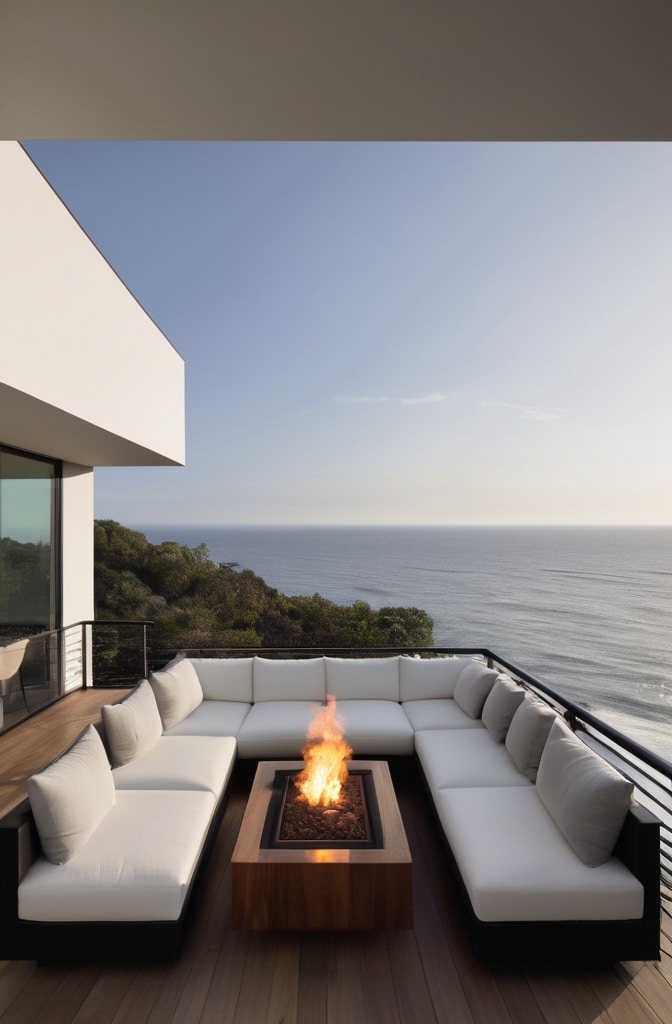
Before diving into specific designs, it’s important to understand the fundamentals of window lighting. These basics will help you create displays that are not only beautiful but also safe and energy-efficient.
A. Choosing the Right Lights for Your Windows
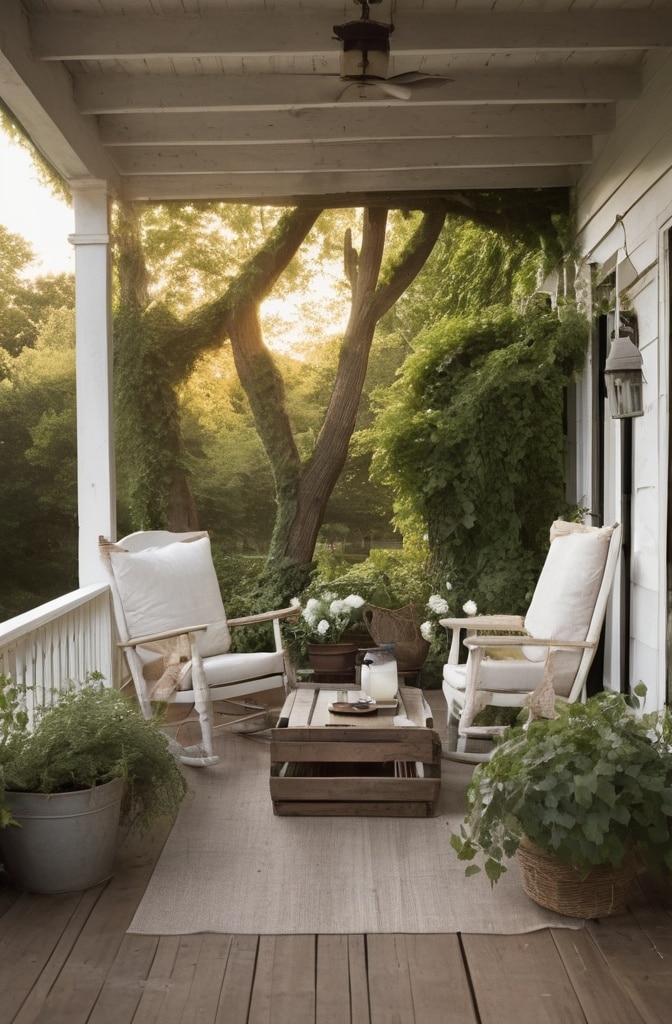
The foundation of any window display begins with selecting appropriate lighting. Different light styles create vastly different effects, and what works for your bay window might not be ideal for smaller casements.
Fairy vs. String vs. Curtain Lights: What’s Actually Different?
Many people use these terms interchangeably, but there are subtle diffrences worth noting:
- Fairy lights: Typically feature smaller, more delicate bulbs on thin, flexible wire. Perfect for intricate designs and wrapping around objects. They create a softer, more ethereal glow.
- String lights: Usually have larger, more spaced-out bulbs on thicker cording. These provide more focused points of light and work well for outlining window frames.
- Curtain lights: Designed with vertical strands hanging from a horizontal wire, creating a waterfall effect. Ideal for covering large window surfaces with an even distribution of light.
Local decorator Marina Stephens notes, “Most people don’t realize that the spacing between bulbs dramatically changes the overall effect. Closer spacing creates a continuous line of light, while wider spacing creates more distinct points of illumination.”
Power Sources: Making the Right Choice
Recent innovations have significantly improved battery life. The newest 2024-2025 LED models from brands like LumiGlow and BrightSeason can run up to 300 hours on a single set of batteries—triple what was available just two years ago.
Light Density Considerations for Different Window Sizes
A common mistake is using inappropriate light density for window size. As a general guideline:
- Small windows (under 2 ft wide): 50-100 mini lights
- Medium windows (2-4 ft wide): 100-200 mini lights
- Large/bay windows (over 4 ft wide): 200-400 mini lights or curtain lights with at least 300 bulbs
When in doubt, decorator Tim Reynolds suggests, “Purchase more lights than you think you’ll need. You can always use fewer, but running short mid-installation is frustrating and leads to inconsistent displays.”
B. Safety First: Installation Guidelines
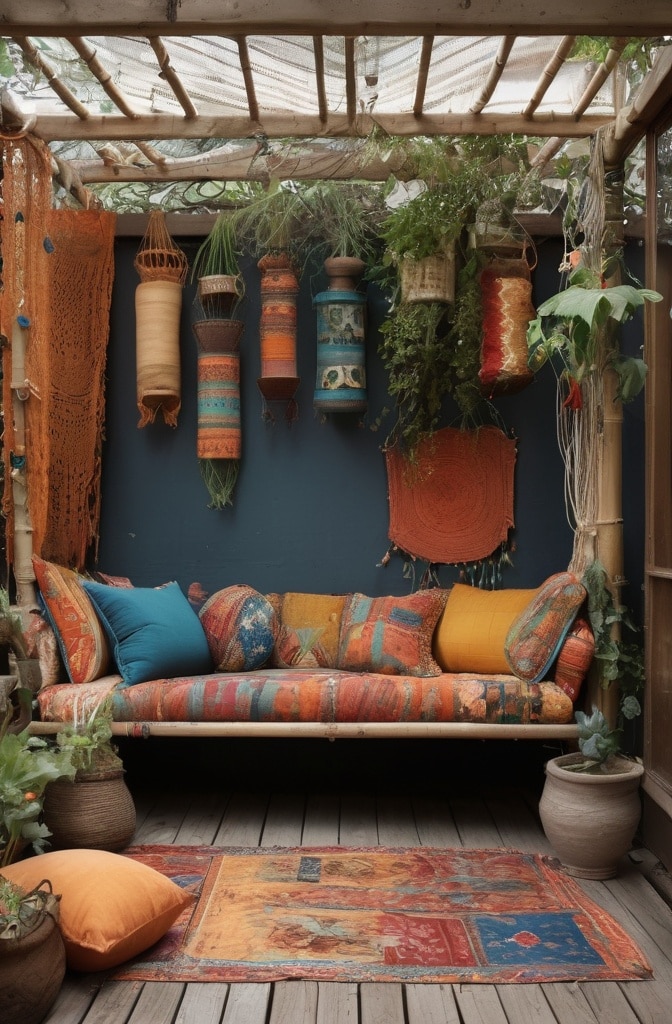
Safety shouldn’t be an afterthought when creating your window displays. Following proper guidelines ensures your decorations remain a source of joy rather than hazard.
Proper Handling of Electrical Components Near Windows
Windows can be sources of moisture and drafts, creating potential electrical concerns:
- Always check cords for fraying or damage before installation
- Use only indoor lights indoors and outdoor lights outdoors (IP44 rating or higher for exterior use)
- Keep connection points away from window edges where condensation might collect
- Avoid overloading circuits (generally no more than 210 watts per circuit)
Heat Management for Extended Display Periods
Modern LED lights generate minimal heat compared to older incandescent versions, but heat management remains important:
- Maintain at least 1 inch between lights and curtains, blinds, or other flammable materials
- Avoid bundling excess cords, which can trap heat
- Set timers to give lights “rest periods,” particularly for older models
Firefighter and safety expert Jamal Williams reminds us, “Most holiday decoration fires aren’t caused by the lights themselves but by improper installation. Keep lights away from paper decorations and check that your smoke detectors are working properly.”
Child and Pet Safety Considerations
For households with young children or curious pets:
- Secure cords to prevent pulling (cord clips work well)
- Keep battery compartments securely closed (some require screwdrivers to open)
- Choose non-breakable LED bulbs rather than glass varieties
- Place control boxes and excess cord out of reach
Weather-Resistant Options for Condensation-Prone Windows
Windows in bathrooms, kitchens, or humid climates may experience condensation:
- Opt for silicone-sealed lights (typically marketed as “bathroom safe”)
- Use clear mounting clips rather than adhesives that might fail when damp
- Consider applying anti-condensation film to windows before installing lights
- Check installations daily during particularly cold weather when condensation is most likely
II. Classic Window Lighting Techniques That Never Fade
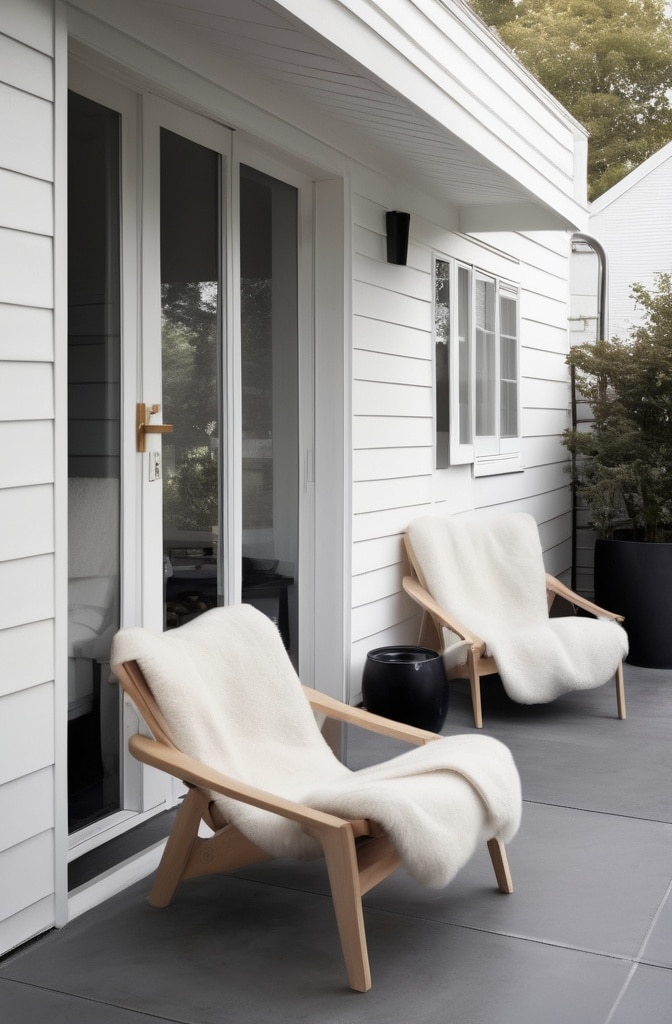
Some window lighting approaches have stood the test of time, remaining popular year after year because of their universal appeal and reliability.
A. Timeless White Light Displays
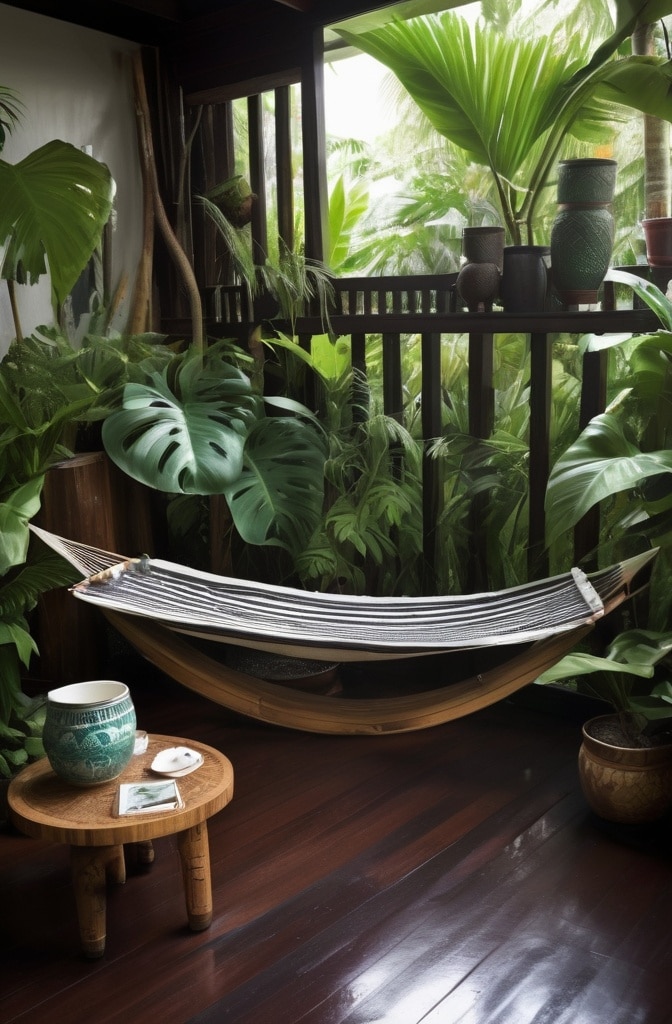
White lights create a classic, elegant appearance that complements any architectural style. They’re versatile enough to work with both traditional and contemporary homes.
Single-Strand Outlining Techniques
The simplest approach often yields the most sophisticated results. Outlining your window with a single strand of lights creates a clean, defined look:
- Measure your window perimeter precisely (add 6-12 inches for slack)
- Choose lights with spacing that allows even distribution
- Start at the bottom corner nearest your power source
- Secure with clear command hooks at 8-12 inch intervals
- Work clockwise, keeping tension consistent
Designer Kelly Martinez observes, “Single-strand outlining is deceptively simple. The key is perfectly even tension—too tight creates gaps at corners, too loose looks sloppy.”
Creating Depth with Layered White Lights
For more visual interest, consider layering different types of white lights:
- Outline the exterior frame with larger bulb string lights
- Add a second layer of mini lights along the interior frame
- Consider a third layer of fairy lights across mullions or window panes
- Use differing twinkle patterns if available
A 2023 study from Home Illumination Quarterly found that layered light displays hold viewer attention 72% longer than single-layer displays, making them worth the additional effort.
Mixing Light Intensities for Visual Interest
Not all white lights are created equal. Mixing intensities creates subtle dimension:
- Ultra-bright LEDs for main outlines
- Medium-brightness for secondary elements
- Soft-glow for accents or background elements
“The human eye is naturally drawn to contrast,” explains lighting designer Wei Chen. “Even within a monochromatic white display, varying brightness creates movement and interest.”
Real Homes Showcase: Before and After Transformations
The Harrison family in Minnesota transformed their ordinary colonial windows with strategic white lighting. “Before, our house disappeared into the night,” explains homeowner Marcus Harrison. “Now, the outlined windows create a gingerbread house effect that’s both sophisticated and welcoming.”
Their approach included:
- Warm white outlines on all window frames
- Cool white accents on mullions
- Battery-operated candles on interior sills
- Simple greenery wreaths suspended from the top of each window
The transformation increased their home’s curb appeal so significantly that neighboring houses began adopting similar techniques the following season.
Read this Blog: https://hometranquil.com/magical-outdoor-christmas-lights-ideas/
B. The Magic of Twinkling Effects
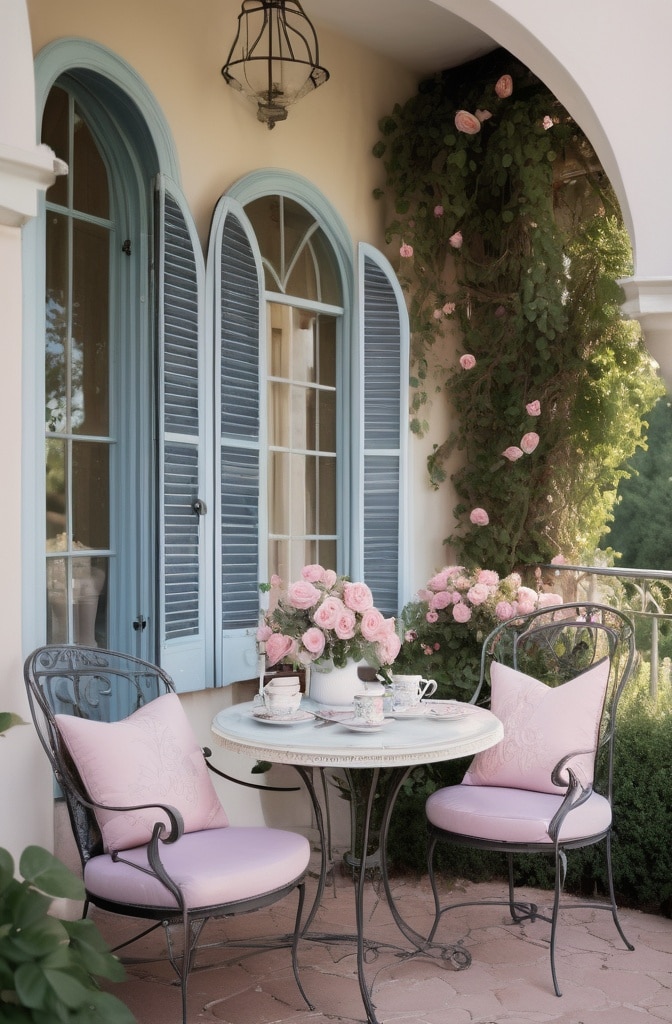
While steady lights provide reliable illumination, twinkling effects add movement and whimsy that capture attention and evoke starlight.
Creating the Perfect Twinkle Timing Pattern
Not all twinkle patterns are equally pleasing. Research from visual perception experts suggests the most appealing patterns follow these guidelines:
- Random rather than sequential twinkling
- No more than 30% of lights twinkling simultaneously
- Each bulb twinkling at intervals of 2-3 seconds
- Overall pattern that doesn’t appear mechanical
Many modern light sets allow pattern customization. The GlowBright Pro controller released in late 2024 offers 18 different twinkle algorithms designed to mimic natural phenomena like starlight and fireflies.
Placement Strategies for Maximum Visibility
Twinkling lights work best when strategically positioned:
- Place at varying depths within the window display
- Concentrate twinkle points where they’ll catch and reflect light
- Position some twinkle points near reflective surfaces
- Consider viewer perspective from different approaches
“I always think about where peoples eyes naturally fall when approaching a house,” says professional decorator Sophia Gonzalez. “Placing twinkling elements along these natural sight lines creates moments of delight.”
How to Combine Static and Twinkling Elements
The most sophisticated displays combine both steady and twinkling lights:
- Use steady lights for structure and definition
- Add twinkling elements for focal points
- Maintain at least 60% steady lights to anchor the display
- Create “zones” of twinkling rather than random distribution
This combination creates a display that feels both grounded and magical—structured enough to be elegant but dynamic enough to be engaging.
Troubleshooting Common Twinkling Light Issues
Even the best twinkling lights sometimes encounter problems:
- Synchronization drift (fix: reset controller at the start of each display period)
- Section failure (fix: check connection points for corrosion)
- Partial twinkle loss (fix: check for loose bulbs)
- Pattern irregularity (fix: replace controller or update firmware if available)
Lighting technician Eduardo Vasquez recommends, “Record a short video of your functioning lights when first installed. This makes it much easier to identify when something’s not working properly later in the season.”
III. Beyond Basic: Creative Window Lighting Approaches
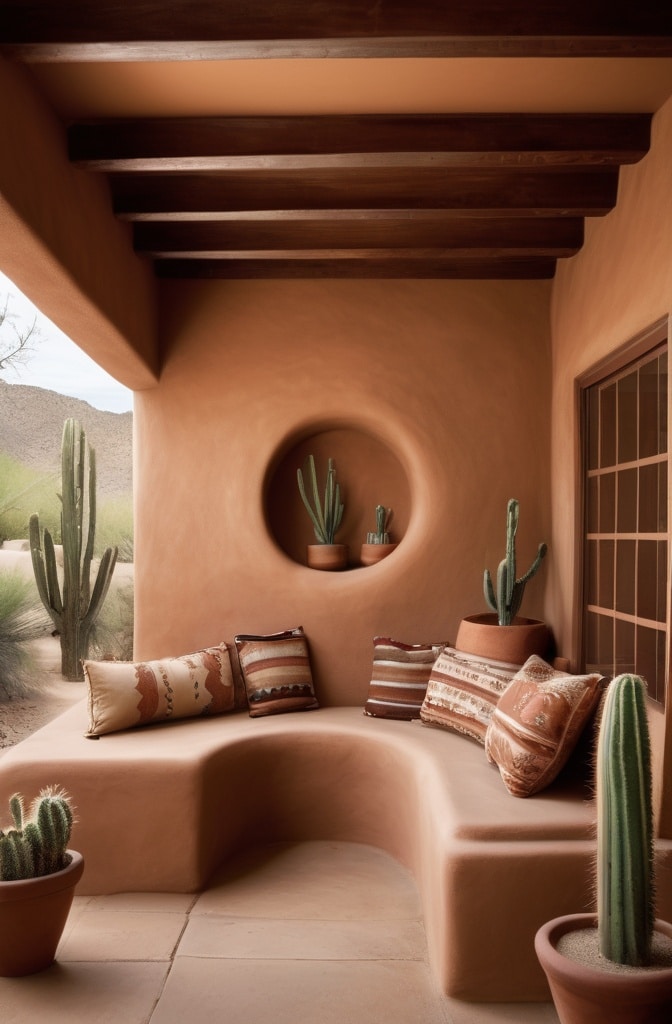
Once you’ve mastered the fundamentals, explore these more advanced techniques to create truly distinctive displays.
A. Curtain Light Masterclass
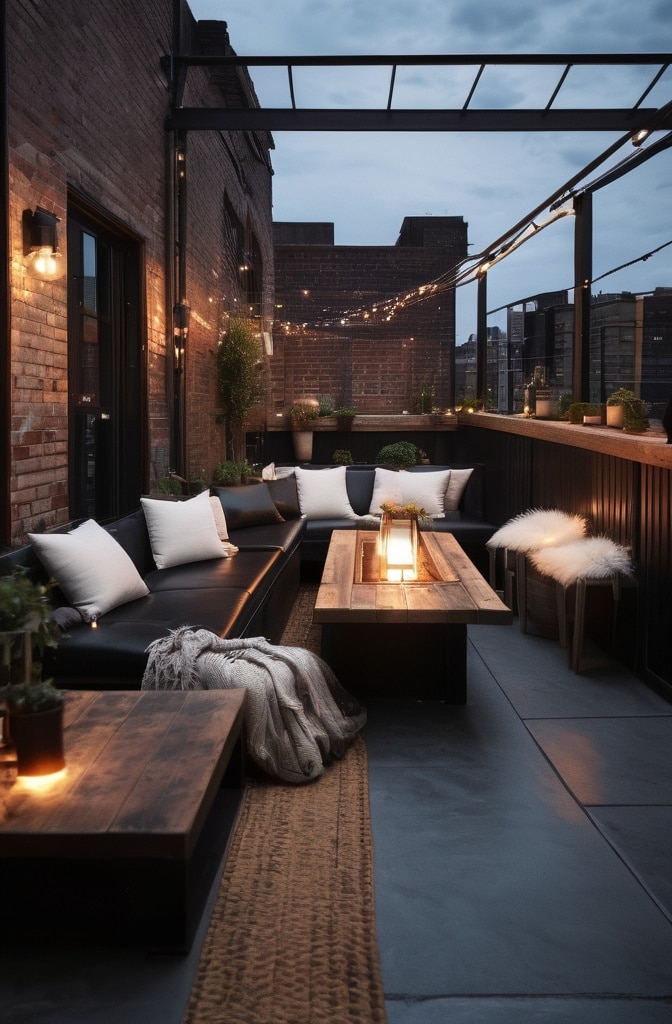
Curtain lights create a dramatic cascading effect that transforms windows into illuminated waterfalls. Their uniform coverage makes them particularly effective for larger windows.
Installation Secrets for Different Window Types
Different window styles require specific approaches:
- Standard rectangular windows:
- Mount rod or tension wire 2-3 inches above window
- Allow 1-2 inches overflow on each side
- Secure bottom with discreet clear tape if needed
- Arched windows:
- Use flexible curtain rods that match the arch
- Start from center, working outward
- Consider custom-cut curtain lights for perfect fit
- Bay windows:
- Install separate curtain sections for each panel
- Overlap slightly at corner junctions
- Use unifying controller for synchronized effects
DIY decorator Amina Johnson achieved professional results by “measuring three times and installing once. I traced my bay window shape on paper first, then mapped exactly where each curtain panel would hang.”
Creating the Perfect Cascade Effect
A true cascade effect requires attention to detail:
- Choose lights with staggered strand lengths (some sets come pre-designed this way)
- Or create custom lengths by securing strands at different points
- Ensure sufficient density (minimum 3-4 strands per foot of width)
- Consider layering different curtain sets for added dimension
Lighting expert Carlos Mendez suggests, “The perfect cascade should appear random yet balanced. If it looks too uniform, gently separate some strands or vary the attachment points.”
Combining Curtain Lights with Existing Window Treatments
Your existing curtains and blinds can work with, not against, your light display:
- Sheer curtains diffuse light for a soft glow effect
- Blinds can be partially closed to create interesting shadows
- Light-colored curtains reflect and amplify light
- Dark curtains create dramatic contrast
Interior designer Taylor Reed notes, “I’ve seen stunning displays where homeowners layer curtain lights between sheer panels, creating depth you simply can’t achieve with lights alone.”
Designer Tips for Bay Windows vs. Standard Windows
Bay windows present unique opportunities and challenges:
- Consider central focal point with radiating light pattern
- Use stronger support systems due to greater weight
- Create zones of different lighting effects across panels
- Remember viewing angles from inside and outside differ substantially
“Bay windows are three-dimensional sculptures of light,” explains architectural lighting designer Emma Rhodes. “Think beyond flat displays and use the depth to create visual stories.”
B. Color Psychology in Holiday Window Displays
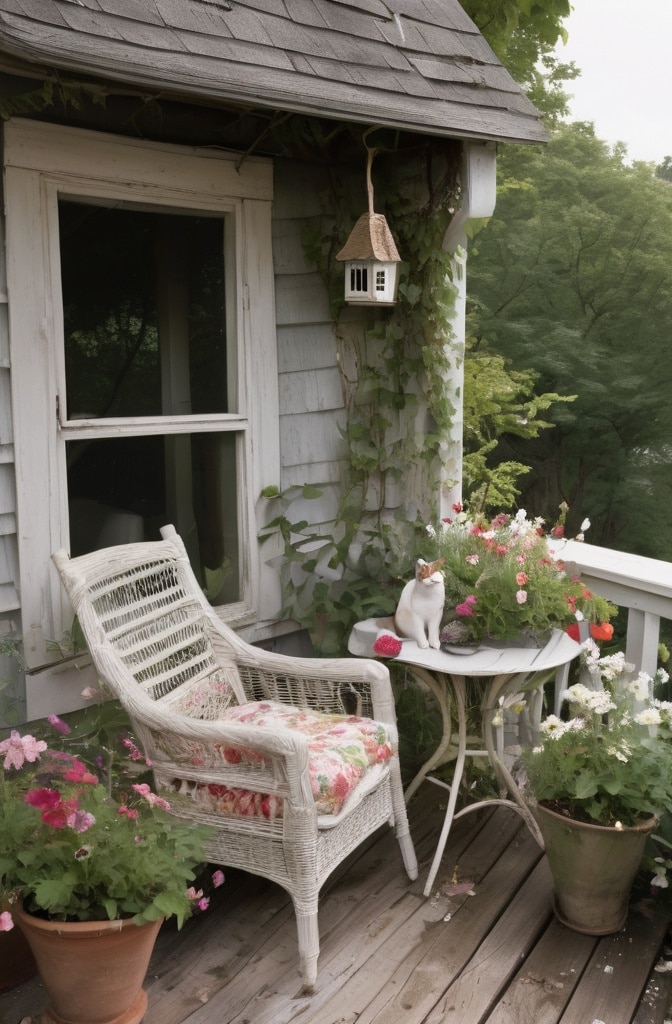
Color significantly impacts mood and perception. Understanding these effects helps create displays with intentional emotional impact.
Warm White vs. Cool White: Setting the Right Mood
The temperature of white light dramatically affects atmosphere:
- Warm white (2700-3000K): Creates cozy, intimate, traditional feel
- Neutral white (3000-3500K): Balanced, versatile, works with most decor
- Cool white (3500-4100K): Modern, crisp, reminiscent of ice and snow
A Housing Trends analysis found warm white lights increase perceived home value by 4% compared to cool white during holiday seasons, likely due to associations with tradition and comfort.
Strategic Use of Multi-Colored Lights
Multi-colored displays require thoughtful application:
- Limit to 3-4 complementary colors for sophisticated look
- Consider color placement (cool colors recede, warm colors advance)
- Use color blocking for contemporary appeal
- Create color themes related to specific holidays (red/green, blue/white)
Color therapist Dr. Renee Thompson suggests, “Red and green may be traditional Christmas colors, but they’re also complementary colors that create maximum visual contrast. This is why they’re so effective together.”
Creating a Cohesive Color Story with Your Home’s Exterior
Your window lights shouldn’t exist in isolation:
- Echo tones from your home’s exterior finishes
- Consider your permanent landscape lighting
- Coordinate with other decorative elements
- Establish color zones that make visual sense
Architect and holiday design consultant Benjamin Lee observes, “The most successful displays treat the entire home as a canvas, with windows serving as focal points within a larger composition.”
Case Study: How Light Color Affects Neighborhood Perception
A fascinating 2024 community study in Lakeview Estates found that light color significantly influenced visitor perceptions:
- Homes with warm white displays were described as “welcoming” and “traditional”
- Cool white displays were perceived as “elegant” and “sophisticated”
- Multi-colored displays registered as “family-friendly” and “playful”
- Homes that coordinated colors with neighbors created a stronger overall impression
Community association president Leslie Walker noted, “Our street section that coordinated with all warm white lights saw a 45% increase in holiday walking tours, creating a destination effect that benefited everyone.”
IV. DIY Window Light Creations
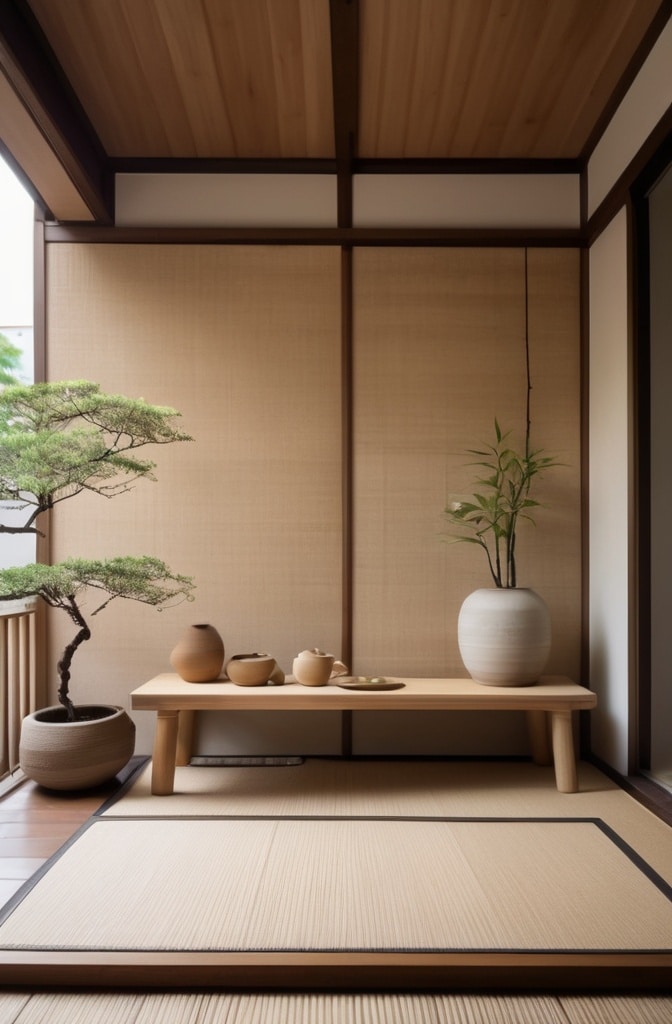
Custom elements add personality to your display while often reducing costs. These DIY approaches combine lights with other materials for unique effects.
A. Paper Cutout Light Displays

Paper silhouettes illuminated from behind create striking visual stories in your windows. This technique dates back centuries but remains effective today.
Step-by-Step Guide to Creating Paper Silhouettes
Even crafting novices can create impressive silhouettes:
- Select simple designs for your first attempts (stars, trees, angels)
- Print templates onto cardstock (65-80 lb weight works best)
- Cut carefully with sharp scissors or craft knife
- For intricate designs, use a cutting mat and take breaks
- Apply removable mounting putty or low-tack tape to attach to windows
“The secret is simplicity,” advises craft expert Jasmine Torres. “Negative space is just as important as what you cut out. Let the light do the work for you.”
Best Practices for Attaching Cutouts Safely
Secure attachment prevents mid-season disasters:
- Test adhesives on an inconspicuous window area first
- Apply in temperatures between 50-70°F for optimal adhesion
- Clean windows with alcohol before application
- Remove and reapply if condensation occurs
- Consider magnetic attachments for metal-framed windows
According to a survey by Crafters Monthly, window damage is the number one concern preventing people from trying silhouette displays. Using proper adhesives specifically designed for window surfaces eliminates this risk.
Light Placement Techniques for Maximum Impact
The position of lights relative to cutouts dramatically affects the final result:
- Distance from cutout: 6-12 inches creates optimal definition
- Angle of light: straight-on for crisp edges, angled for softer effect
- Light color: white maximizes detail, colored adds mood
- Light movement: static for clarity, twinkling for dynamic effect
Professional photographer Rita Malone, who documents holiday displays, suggests, “Experiment with light distance. Moving lights farther back creates softer, more diffused edges that can be quite ethereal.”
Original Template Designs (With Downloadable Patterns)
While many templates are available online, creating custom designs adds personal meaning:
- Family silhouettes create touching personalized displays
- Local landmarks connect to community identity
- Pets and favorite animals add whimsical touches
- Abstract patterns work well for contemporary homes
Craft blogger Michael Tomkins shares, “My most popular template is surprisingly simple—just overlapping circles of different sizes backit with fairy lights. It’s modern, elegant, and takes minutes to create.”
B. Creative Patterns with Adhesive Light Strips
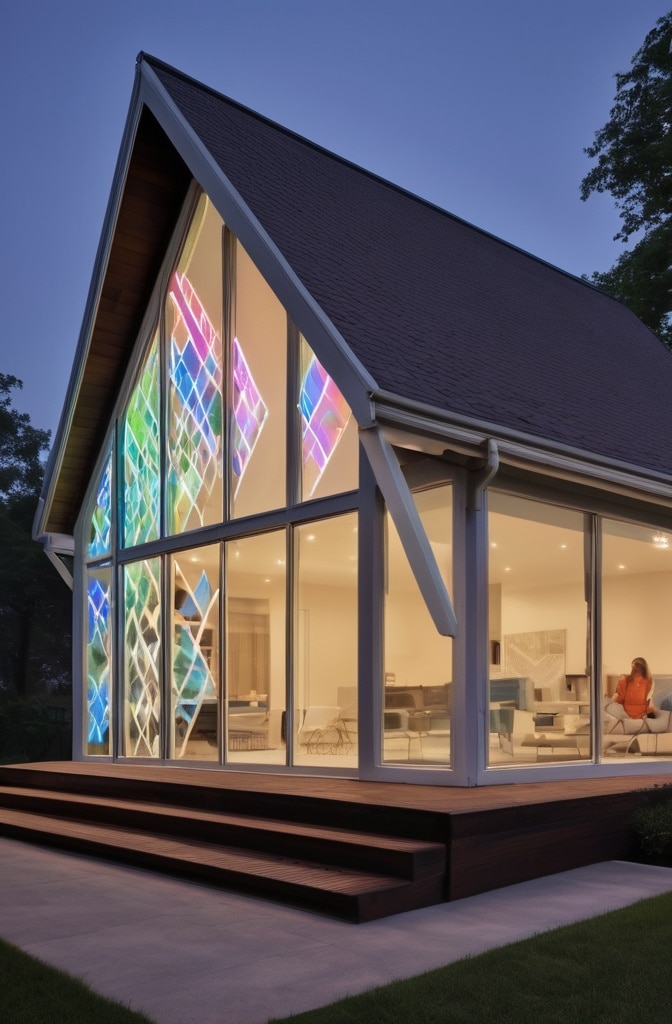
Flexible LED strip lights have revolutionized creative lighting, allowing precision designs directly on window surfaces.
Beyond Basic Outlines: Creating Geometric Designs
Geometric patterns offer modern sophistication:
- Concentric shapes create depth and visual interest
- Parallel lines suggest movement and direction
- Grid patterns create stability and structure
- Asymmetrical designs draw the eye to specific areas
Interior designer Jordan Williams notes, “LED strips have transformed what’s possible. We’re now creating window displays that function as light art installations rather than mere decorations.”
Seasonal Motifs That Wow Neighbors
Beyond abstract patterns, consider seasonal imagery:
- Snowflakes with branching complexity
- Christmas trees with “ornament” lights
- Stars with radiating light patterns
- Candy canes with alternating white and red strips
The 2024 Neighborhood Impact Survey found that unique, creative window designs were remembered by 87% of passersby, while standard outlines were recalled by only 23%.
Combining Adhesive Strips with Other Lighting Elements
For maximum impact, combine strip lights with other elements:
- Use strips for structure, fairy lights for texture
- Outline shapes with strips, fill with curtain lights
- Create patterns with strips, accent with spotlights
- Define borders with strips, add dimensional elements within
“The magic happens at the intersection of different light types,” explains holiday display designer Terry Johnson. “Each light style has distinct properties that, when combined thoughtfully, create depth impossible with single-type displays.”
Removal Strategies That Won’t Damage Windows
Proper removal preserves both your windows and the possibility of reusing lights:
- Wait until temperatures are above 50°F if possible
- Use hairdryer on low setting to warm adhesive
- Pull strips parallel to surface, never outward
- Use adhesive remover specifically formulated for glass
- Clean thoroughly after removal to prepare for next season
Window treatment specialist Ana Lopez advises, “Patience during removal saves both your windows and your lights. I’ve seen customers successfully reuse quality strip lights for 5+ seasons by removing them carefully.”
V. Integrating Window Lights with Other Decorative Elements
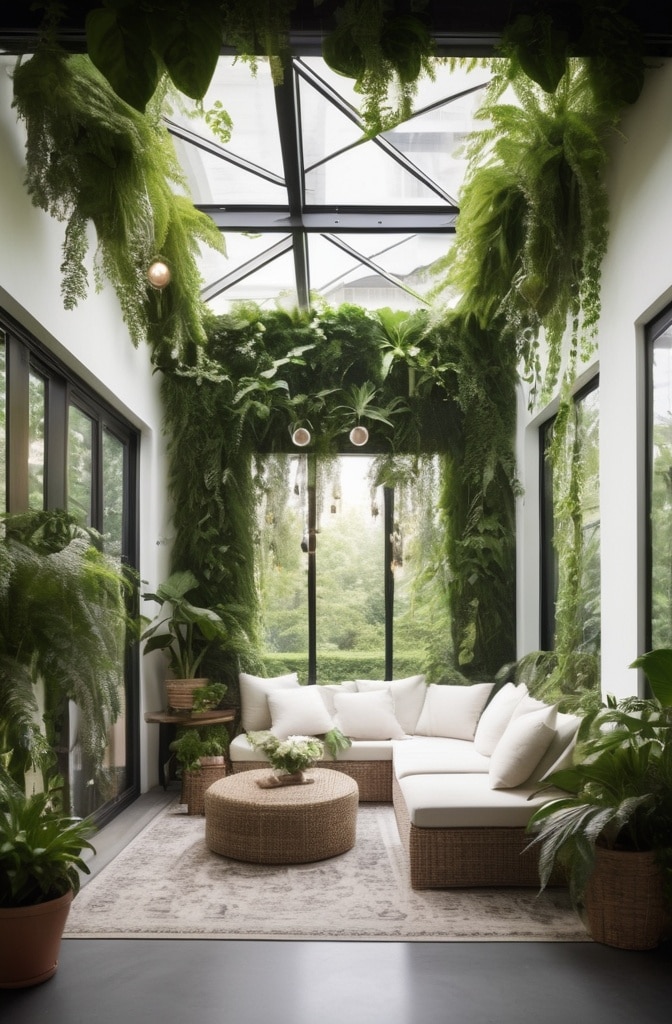
The most sophisticated displays combine lighting with complementary decorative elements, creating multi-dimensional visual experiences.
A. Synergy with Greenery
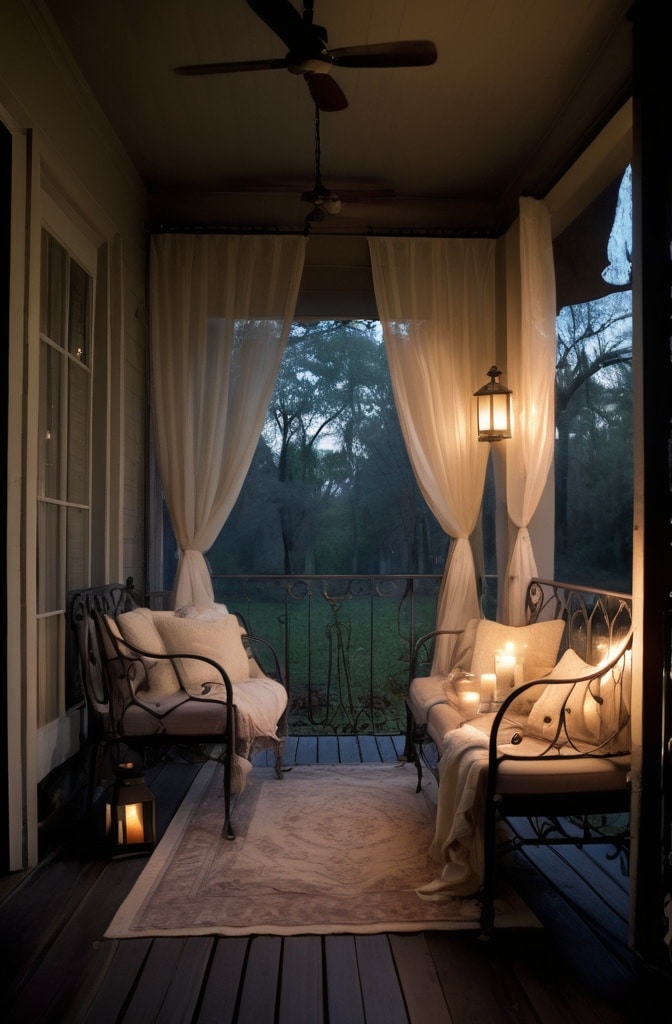
Natural elements add texture, fragrance, and organic contrast to the shine of holiday lights.
Techniques for Weaving Lights Through Garlands
Create illuminated greenery that frames your windows:
- Use 100 lights per 6 feet of garland for optimal brightness
- Weave in figure-eight pattern to prevent slippage
- Start from power source end, working outward
- Secure with floral wire at key points
Professional florist Darnell Wilson suggests, “Pre-lit garlands never have enough lights for truly spectacular displays. I always add an additional strand per foot to create that magical glow-from-within effect.”
Creating Illuminated Wreaths for Window Display
Window-mounted wreaths become focal points when properly illuminated:
- Battery-operated lights eliminate cord management issues
- Weave from inside out, concealing battery pack in dense foliage
- Choose cool-running LED lights to prevent needle drop on live wreaths
- Consider contrasting light colors (warm lights on blue-toned evergreens, cool lights on golden wreaths)
According to a Better Homes survey, illuminated window wreaths ranked as the single most impactful decorative element when viewed from street level.
Balancing Natural and Artificial Elements
The juxtaposition of organic materials with lights creates pleasing contrast:
- Mix realistic faux garlands with natural accent pieces
- Choose greens that complement your home’s color scheme
- Add natural elements like pinecones, berries, or citrus
- Consider scented elements for interior enjoyment
Biophilic design expert Sasha Patel explains, “Our brains respond positively to the combination of structured light patterns and natural forms. This creates a particularly satisfying sensory experience.”
Preserving Plants with Embedded Lights
If using live plants, take preservation steps:
- Choose cool-running LED lights only
- Mist greenery daily to maintain moisture
- Keep away from heat sources
- Select hardy varieties like noble fir or cedar
- Consider removing lights occasionally to allow plant recovery
“Even the most resilient evergreens need care when combined with lights,” cautions horticulturist Grace Kim. “The additional heat, while minimal, can accelerate moisture loss in already stressed cut greenery.”
B. Fabric and Light Combinations

Textiles add softness and dimension while diffusing light in beautiful ways.
Sheer Curtains as Light Diffusers
Translucent fabrics transform harsh points of light into gentle glows:
- Choose lightweight fabrics with minimal texture
- White and ivory maximize light transmission
- Colored sheers create tinted light effects
- Layer different sheers for graduated color effects
Interior stylist Madison Cooper notes, “The combination of fairy lights behind sheer fabrics creates an effect similar to expensive custom lighting at a fraction of the cost.”
Creating Illuminated Window Treatments
Turn existing curtains and blinds into lighting elements:
- Weave fairy lights through curtain rod pockets
- Add light strands between curtain layers
- Attach battery-operated light strips to blind bottoms
- Create light “pockets” with gathered fabric
A creative approach from design influencer Ravi Patel involves “hiding STRIP lights along window casings, then using sheer curtains to diffuse the light. The effect resembles sunlight even on the darkest winter evenings.”
Texture Play: Mixing Materials for Visual Interest
Contrasting textures create sophisticated displays:
- Pair smooth satin ribbons with rough burlap
- Contrast metallic elements with natural fabrics
- Mix transparent and opaque materials
- Layer different fabric weights for dimensional effect
“Textural contrast is just as important as color contrast,” explains textile designer Elena Rodriguez. “When light interacts with different surfaces, it creates micro-shadows and highlights that add incredible depth.”
Quick-Change Systems for Rotating Seasonal Displays
Create versatile window treatments that evolve throughout the season:
- Install semi-permanent anchors that support different decorations
- Use modular elements that can be recombined
- Design plug-and-play light configurations
- Create fabric panels that attach with velcro or magnets
Party planner and seasonal decorator Jamie Williams shares, “I created a window treatment system with interchangeable elements for different holidays. The lighting base remains constant, but the decorative layers change from Thanksgiving through New Year’s with minimal effort.”
VI. Advanced Window Display Techniques
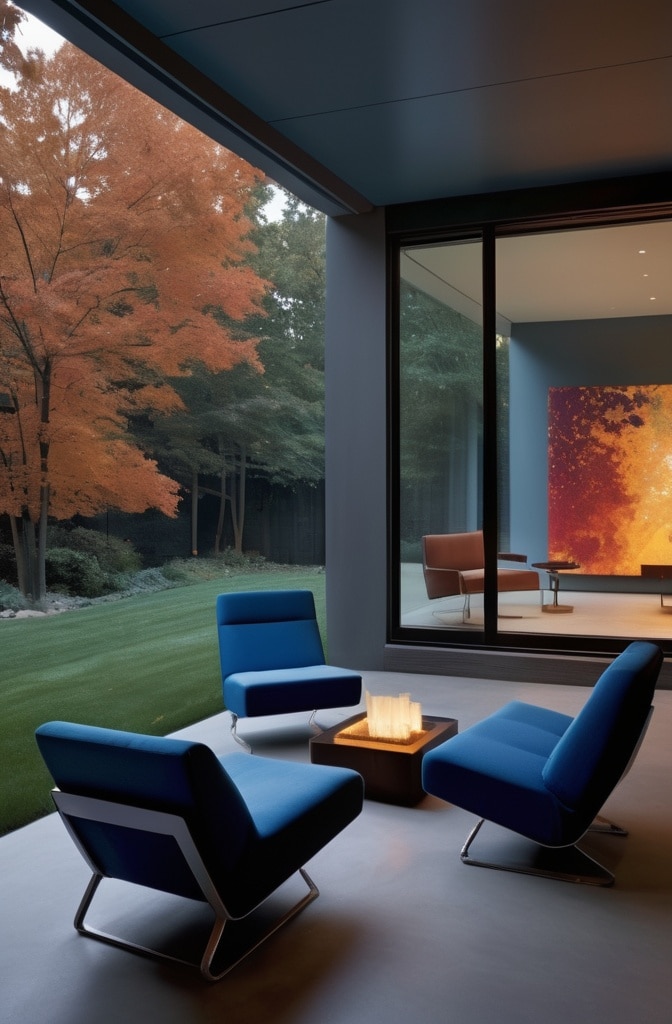
For those ready to take their displays to professional levels, these advanced approaches create truly memorable effects.
A. Starry Light Installations
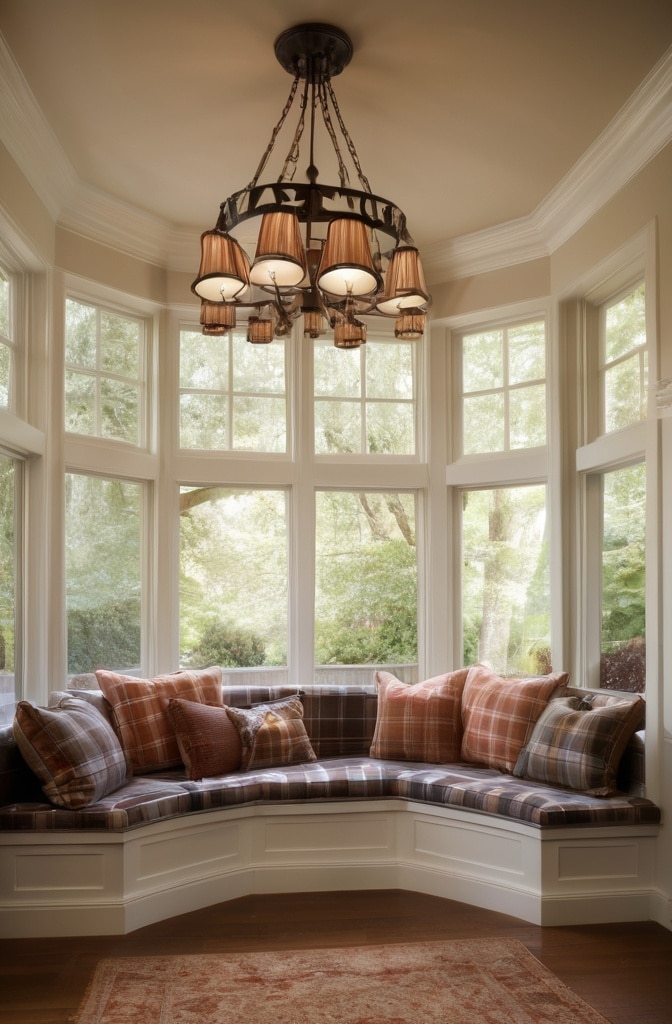
Few displays capture imagination like those mimicking celestial patterns. These techniques create enchanting night sky effects indoors and out.
Creating Night Sky Effects with Specialized Lights
The key to realistic starry effects lies in light selection and arrangement:
- Use lights with various intensities in the same display
- Incorporate micro-LEDs for distant “stars”
- Add larger, brighter points for “nearby stars”
- Consider fiber optic elements for truly magical effects
Astronomy enthusiast and decorator Paul Jenkins created a remarkable window display mapping actual constellations: “I researched winter sky maps and recreated Orion and the Pleiades in our bay window. Neighbors stop to identify the patterns, turning decoration into education.”
3D Star Hanging Arrangements
Moving beyond flat displays creates immersive experiences:
- Suspend star-shaped lights at varying depths
- Use fishing line for “invisible” hanging
- Create clusters of varying sizes
- Consider motorized elements for gentle movement
Professional display artist Nina Rodriguez advises, “The secret to dimensional displays is creating layers at 2-inch intervals, starting from the glass and working inward. This creates true depth perception rather than a flat ‘stage set’ appearance.”
Programming Light Sequences for Cosmic Effects
Advanced controllers create dynamic astronomical displays:
- Simulate meteor showers with chase effects
- Create “twinkling” patterns that mimic true stars
- Program “constellations” to illuminate sequentially
- Consider gradual brightness changes mimicking celestial movement
According to consumer electronics data, programmable light controllers saw a 147% sales increase for holiday 2024, reflecting growing interest in dynamic displays.
Expert Interview: Astronomical Lighting Designer Insights
Renowned lighting designer Damien Foster, known for creating stellar displays for planetariums, shares his technique: “I approach window displays as miniature theatrical productions. Each light serves a purpose in the overall narrative—some are steady anchors while others create movement and surprise. The key is restraint; too many moving elements create chaos rather than wonder.”
B. Projection Mapping for Windows
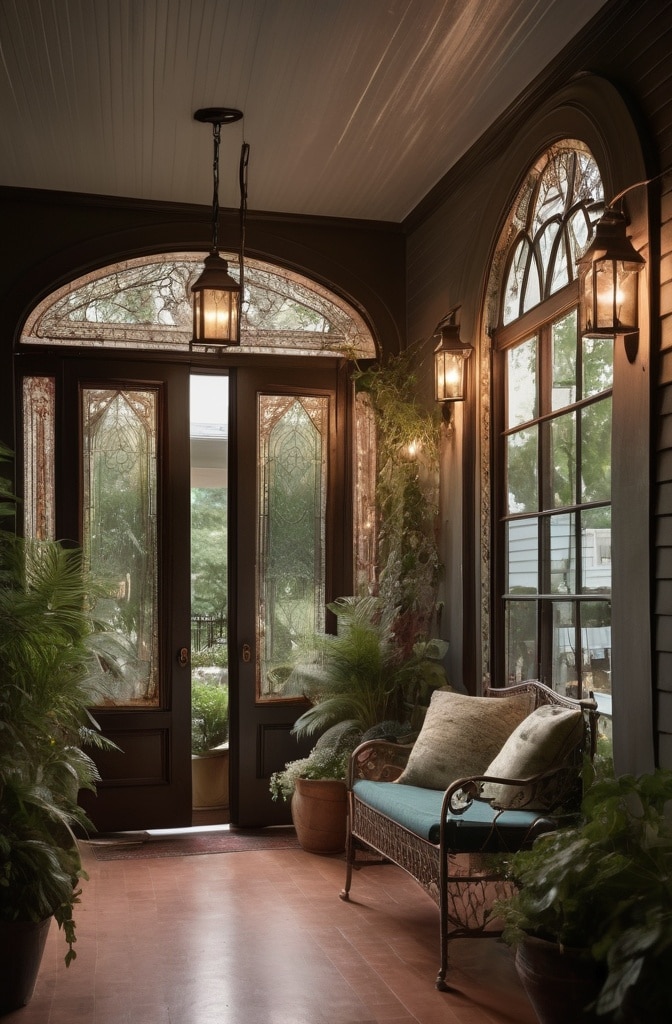
Projection technology has become affordable enough for home use, opening new creative possibilities.
Latest Window Projection Technology Review
Recent innovations have made projection more accessible:
- Compact LED projectors starting around $150
- Battery-operated options for cord-free installation
- Smartphone-controlled models with downloadable scenes
- Weather-resistant models for exterior projection
Tech reviewer Lisa Chen reports, “The MiniBright Pro released in October 2024 represents a game-changer for home projection. At under $200, it offers 1080p resolution, 4-hour battery life, and pre-loaded holiday scenes that rival professional installations.”
Creating Dynamic Scenes That Change Throughout the Evening
Modern projectors allow evolving displays:
- Program gradual transitions between scenes
- Schedule different themes for different times
- Create interactive elements that respond to movement
- Incorporate countdowns to special dates
Event designer Marco Vasquez created a neighborhood sensation with programmed projections: “We started with gentle snowfall at dusk, transitioning to animated gift-opening at childrem’s bedtime, then a sophisticated starry night scene for adult evening hours.”
DIY Projection Mapping on a Budget
Even without expensive equipment, creative projection is possible:
- Use household projectors with specialized films
- Create custom animations with free software
- Project onto unusual surfaces like frosted glass
- Combine projection with physical elements for added dimension
College student and budget decorator Zoe Williams shares, “I created cutouts from cardboard, placed them in the window, then projected moving patterns onto them. The entire setup cost less than $50 but created a professional-looking animated display.”
Integration with Smart Home Systems
For tech enthusiasts, connected displays offer convenience and sophistication:
- Voice-activated scene changes via smart assistants
- Synchronization with other home lighting
- Remote control via smartphone apps
- Automated scheduling based on sunset times
Smart home expert Terrence Wu notes, “The integration of holiday lighting with home automation systems represents the fastest-growing segment of the smart home market, with a 215% increase in compatible devices since 2023.”
VII. Special Considerations for Different Window Types
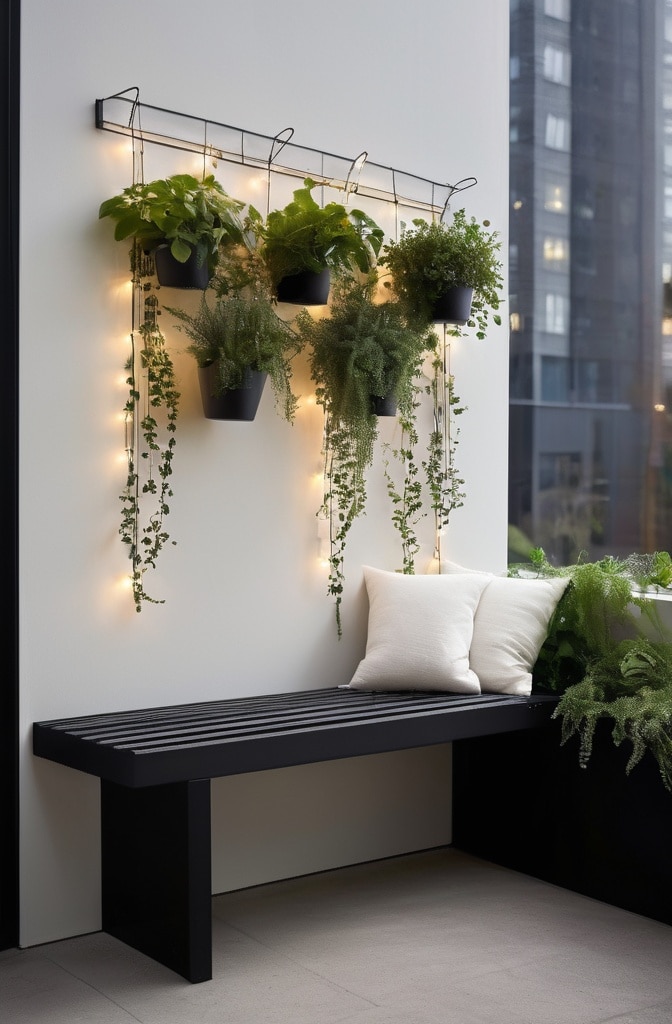
Different architectural styles present unique opportunities and challenges for holiday lighting.
A. Bay Window Illumination Strategies
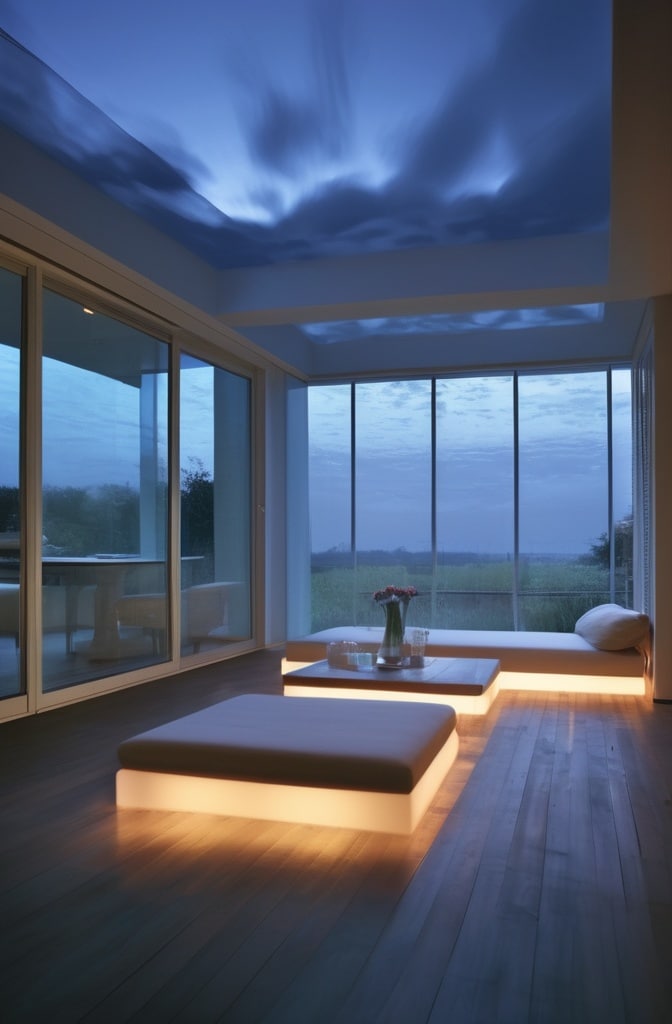
Bay windows provide expansive, multi-dimensional canvases for creative lighting.
Highlighting Architectural Features with Light
Emphasize the unique structure of bay windows:
- Outline individual panels to accentuate geometry
- Illuminate mullions and muntins for architectural detail
- Use contrasting light styles for different structural elements
- Consider gradient effects that emphasize depth
Architectural lighting specialist Mia Sanchez suggests, “Bay windows are essentially light sculptures. I recommend emphasizing their three-dimensionality rather than treating each panel as a flat surface.”
Creating Depth with Layered Lighting
Bay windows allow true depth that standard windows can’t match:
- Position lights at multiple distances from glass
- Create foreground, midground, and background light elements
- Use brighter lights toward rear, softer toward front
- Consider silhouette elements at varying depths
Designer Aaron Goldman describes his award-winning display: “I created a miniature winter village across the three panels of my bay window, with string lights defining the ‘sky,’ LED candles creating middle-ground warmth, and detailed silhouettes against the glass. The three-dimensional effect is magical from both inside and out.”
Solutions for Hard-to-Reach Areas
Bay windows often include challenging installation points:
- Use extension poles with hooks for high corners
- Consider remote-controlled battery lights for inaccessible spots
- Install semi-permanent anchor points during daylight hours
- Use magnetic attachments where appropriate
Safety expert Jasmine Torres cautions, “Never compromise safety for decoration. If you can’t reach an area safely with a proper ladder, either modify your design or hire professionals.”
Real Home Showcase: Before and After Transformations
The Chen family transformed their traditional bay window using principles of depth and contrast:
- Before: Scattered string lights created a disorganized appearance
- After: Methodically planned layers including:
- Exterior frame outlined with warm white lights
- Interior muntins highlighted with cool white micro-lights
- Battery candles on sill for midground interest
- Hanging star elements at various depths
- Sheer white curtains for light diffusion
“The difference was astounding,” reports homeowner David Chen. “What was once just a decorated window became an immersive experience, like looking into another world.”
B. Historic Window Enhancement Techniques
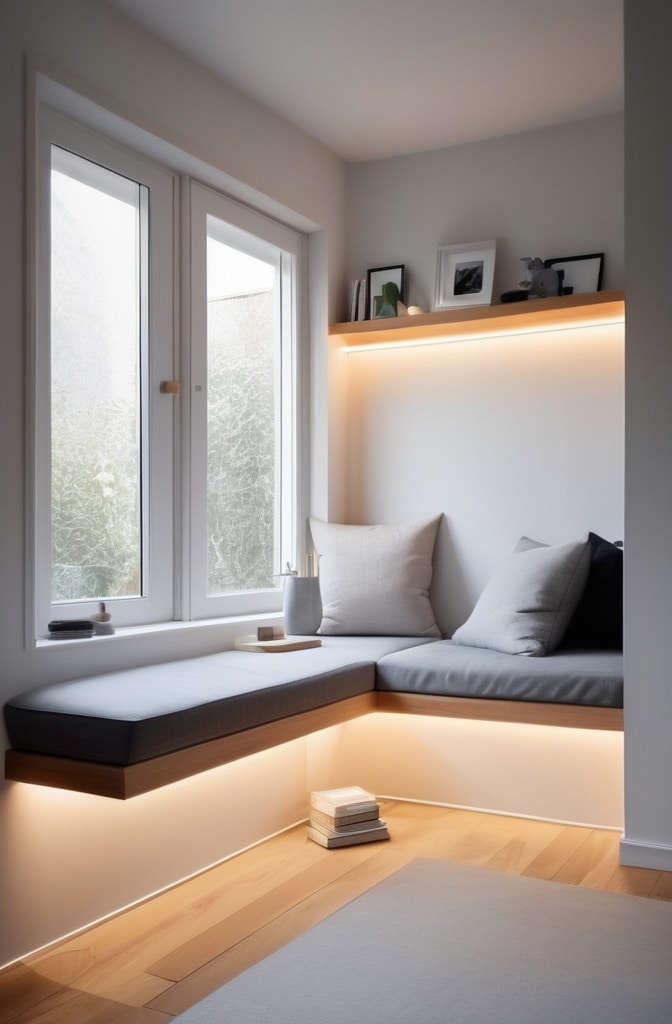
Older homes require special consideration to preserve architectural integrity while creating beautiful displays.
Non-Damaging Installation Methods for Older Homes
Historic windows require gentle treatment:
- Use removable hooks specifically designed for older glass
- Consider tension rods that don’t touch window frames
- Utilize existing hardware when possible
- Avoid adhesives directly on antique glass or frames
Preservation specialist Dr. Eleanor Wright advises, “Historic windows often have irreplaceable wavy glass and delicate muntins. Always prioritize preservation over decoration.”
Complementing Period Architecture with Appropriate Lighting
Historically sensitive lighting enhances rather than overwhelms:
- Research lighting styles from your home’s era
- Choose bulb shapes and colors that complement architecture
- Consider simulated candle lights for pre-electric period homes
- Use subtle lighting techniques that emphasize existing features
Architectural historian Thomas Jeffers notes, “The most successful historic home displays honor the original design intent. For Victorian homes, warm amber lights complement the ornate detailing, while Arts and Crafts bungalows benefit from warm white lights that emphasize handcrafted woodwork.”
Balancing Tradition and Modern Technology
Innovation can respect tradition:
- Conceal modern elements behind period-appropriate decorations
- Use smart technology for convenient control of traditional-appearing lights
- Choose cord colors that blend with historic woodwork
- Consider battery operation to avoid modern cord management issues
Interior designer specializing in historic properties, Gabriella Martinez, shares: “I’ve installed modern LED strip lights in historic homes by concealing them behind original window valances. The effect honors the architecture while providing energy-efficient illumination.”
Preservation Considerations
Protecting historic elements remains paramount:
- Monitor temperature changes that might affect antique glass
- Use only non-residue adhesives approved for historic surfaces
- Consider humidity impacts, especially with single-pane windows
- Document window condition before installation
The Historic Homeowners Association recommends, “Create a ‘decoration plan’ for historic properties that identifies safe attachment points and avoids irreplaceable elements. This plan can be reused yearly to minimize repeated assessment of fragile areas.”
VIII. Practical Matters: Installation Without Damage
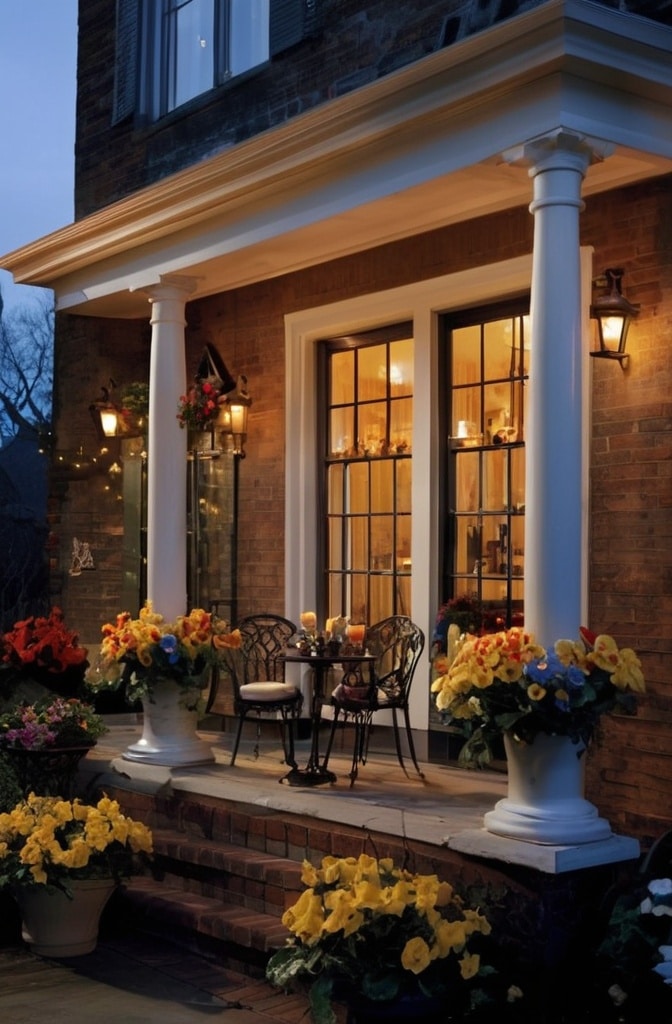
Beautiful displays shouldn’t come at the cost of property damage. These techniques ensure your windows remain pristine.
A. No-Trace Mounting Solutions
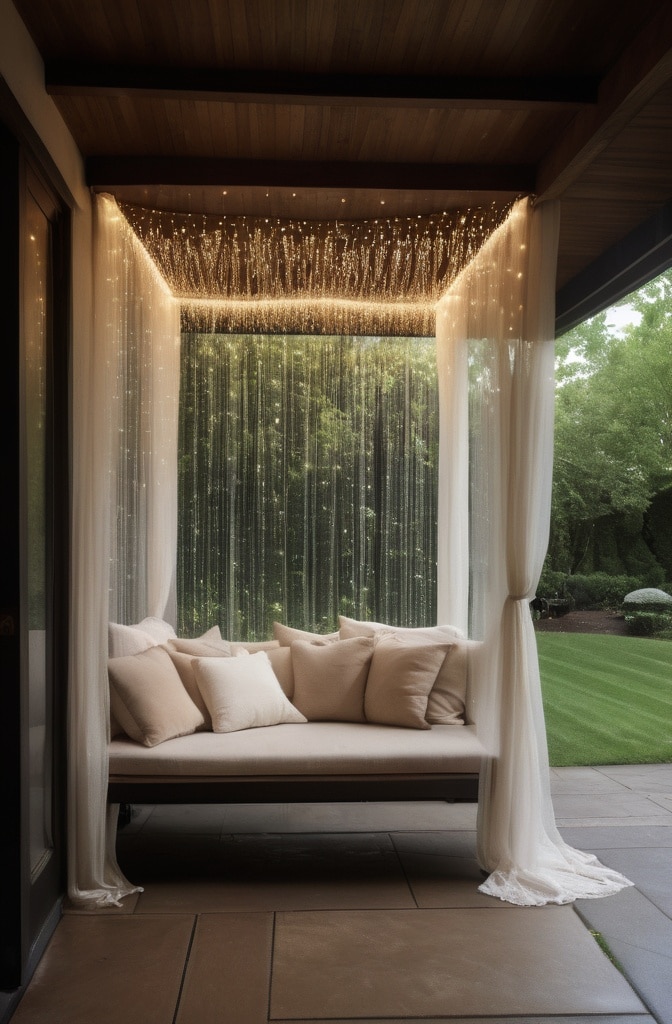
Temporary attachments make cleanup easier and prevent costly repairs.
Comprehensive Comparison of Adhesive Options
Professional installer Marcos Rivera notes, “I test new adhesive products every season. The newest silicone-based options from DisplayGrip offer excellent holding power with truly zero residue, even on painted surfaces.”
Installation and Removal Best Practices
Proper technique significantly impacts results:
- Clean surfaces thoroughly with alcohol before installation
- Install at room temperature (65-75°F ideal)
- Allow adhesives to cure fully (usually 1 hour) before adding weight
- Remove by pulling parallel to surface, never outward
- Use dental floss for stubborn adhesive
